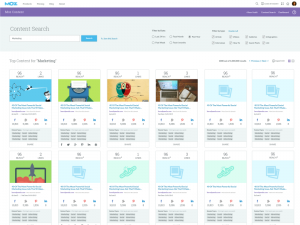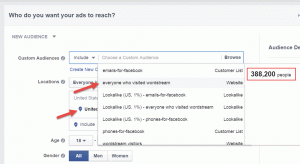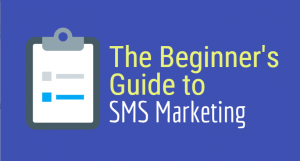A few weeks back, Google began rolling out the latest update to their Panda search engine algorithm. As with every algorithm change Google makes, marketers and company leaders are anxious to understand how their websites will be impacted.

Panda 4.2 arrives nearly ten months after 4.1 was released in September of 2014, and appears to be more of a refresh of the previous algorithm, as opposed to a more substantial update. According to Google, the update can take months to fully roll out and the change will likely affect about 2%–3% of English language queries—roughly 36 million.
What are the changes?
Google has become increasingly tight-lipped about specifics of their algorithm changes and there has been no official announcement made from Google at this point. Back in June, Gary Illyes from Google made an announcement at SMX Advanced that there would be a Panda update in the coming weeks. Due to the refresh nature of this update, it’s helpful to understand the background of the Panda algorithm.
Panda was originally released in 2011 in Google’s effort to reward high-quality content in search engine rankings and remove (or penalize) bad, redundant or spammy content from search results. Likewise, subsequent updates (including Panda 4.2) continue to underscore Google’s effort to improve the quality and relevancy of search results. This is a recurring theme and one that all marketers and webmasters should take permanent note of.
What is the impact?
Moz’s Google Algorithm Change History page states that the immediate impact of Panda 4.2 is unclear. The previous (4.1) update saw small- and medium-sized websites with high quality content ranking higher, so one might assume that this trend is likely to continue. The SEM Post quoted Dr. Pete Meyers of Mozcast, saying that he doesn’t see too much impact related to the update yet:
“As of now, I have no clear evidence of a Panda update. Past Panda refreshes have varied wildly in impact.”
At this stage of the game, it’s difficult to know who will come out ahead and who will suffer from the update. Those who had a positive uptick after the rollout out of 4.1 will likely continue that trajectory. And those who saw their traffic drop after 4.1—and responded appropriately—will likely see their traffic start to go back up. While it’s mostly speculative at this point, as the update continues to roll out, the impact should become clearer.
How should marketers respond?
While we know that there’s been an update to Google’s Panda algorithm, admittedly there are not a lot of specifics to share related to the change and impact. For marketers, many questions remain about how they should respond, what should change and how to adapt moving forward. While there are certainly technical ramifications to Google’s algorithm updates, the big picture continues to revolve around the need for high-quality, original content.
Simply put, it’s all about being the best answer to the questions that your target audience is searching for online. Remember, the intent of Google is not to serve up the websites with the best optimized copy, but rather the websites with the most relevant and valuable content related to the search query. The days of tricking the algorithms are over, so marketers should focus more on developing the high-quality content that their audiences are seeking.
But what does Google deem to be high-quality content?
If SEO these days revolves so much around high-quality content, what exactly does Google consider high-quality content? It’s a great question and one that needs some unpacking. Leading SEO expert, Rand Fishkin, had a lot of helpful points to share about this topic in a recent interview with The Content Strategist.
Here’s what he had to say about quality content:
“I think there’s still a lot of [misguided] belief around quantity over quality…There’s not a whole lot of value in writing a decent blog post anymore. [There’s not a lot of value] unless you can be pretty extraordinary. Ask [this]: If they’re searching for an answer to a question, would they rather reach your piece of content than anything else on the Internet right now? Unless the answer is a slam dunk, ‘Yes, this is 10 times better than anything else out there,’ I’m not necessarily sure it’s worth publishing.”
As it relates to publishing content that is truly unique and original, he offered this helpful suggestion:
“Prior to deciding you’re going to publish on a topic or coming up with an idea, I would go research everything that’s out there and make sure I have the ability to say that this piece is better than this other piece, and here’s why.”
SEO is an ever-evolving process
SEO is indeed an ever-evolving process that involves understanding how search engine algorithms work, what content people are searching for and how best to earn rankings, traffic, and links. While SEO rests primarily on creating high-quality and original content, the technical aspects (both on-page and off-page) and providing a solid user experience still matter. With each and every algorithm update, it’s important for marketers to understand the changes, the intention behind the changes and to continually strive to please both end-users and search engines in their efforts.
(216)








